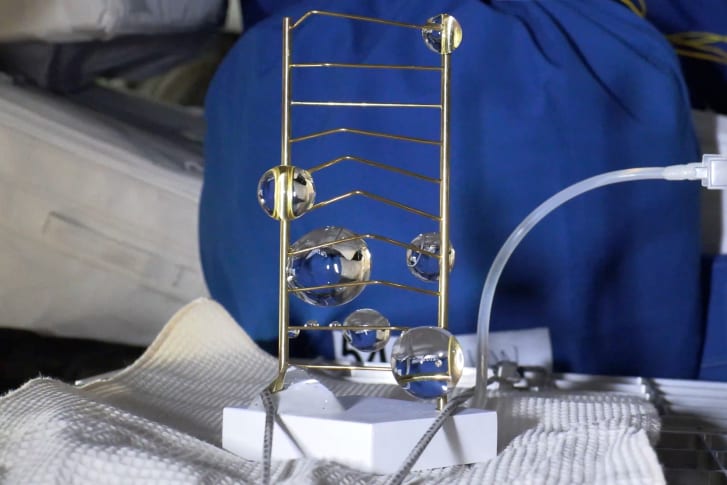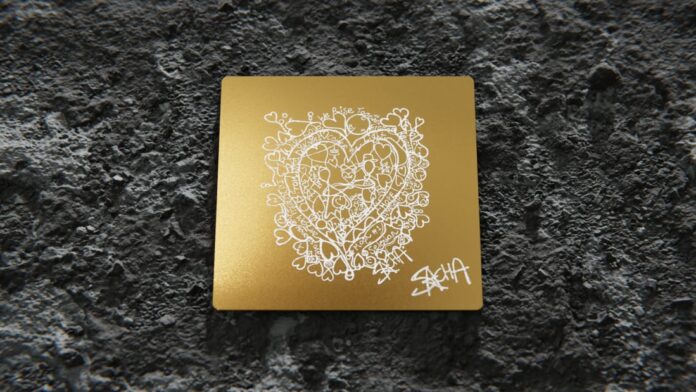In March, artist Dubai-based artist Sasha Jafri’s engraving will be placed in a lunar crater known as Lacus Mortis – the Lake of Death.
Jaffrey’s work “We Rise Together — By the Light of the Moon” is scheduled to go into space on a United Launch Alliance rocket. The rocket is equipped with engines developed by Jeff Bezos’ Blue Origin company. The launch is scheduled to take place at the Kennedy Space Center in Cape Canaveral, Florida, in early March.
The artwork by Sacha Jafri is an engraving depicting a male and female figure surrounded by 88 hearts. As Jafri explained, the original artwork was a beautiful heart motif. Two figures are intertwined, reunited, and flora and fauna flourish around them.
For the canvas by the Dubai-based artist, a gold alloy was developed over the course of two years to withstand the extreme conditions on the lunar surface while maintaining the integrity of the artwork. But the work is intended not only for lovers of extraterrestrial art.
Sacha Jafri also said that when the physical artwork lands on the moon, a soft beep will sound in the control room. At this signal, 88 NFTs will be released for sale on Earth.
Jafri plans to donate all proceeds to humanitarian charities. The Dubai-based artist hopes to raise a huge amount of money for our world’s four major charitable causes – health, education, sustainability, and equality.
Jafri’s artwork is not the only piece of art on the ISS. In 2017, for example, a work by Israeli artist Eyal Gever was 3D printed on the International Space Station [ISS]. Hever collected recordings of laughter and used sound wave signatures to create his sculpture.

In April 2022, another Israeli artist, Liat Segal created an artwork that can only exist in space. The “Impossible Object” exploits the lack of gravity in space and is a layered structure of gold-colored metal pipes from which water is released. In space, water created floating elements around the sculpture. It is known that it is impossible to achieve such an effect on Earth, since water would fall to the ground.
Segal noted that many technologies were developed as a result of the space race to adapt to the new physical reality. And now, in his opinion, art and culture can enter this new physical reality. It will cause things to be created that we cannot expect, that otherwise could not happen.
Sacha Jafri is also excited about the creative possibilities and believes that private spaceflight will open up new opportunities for artists.

























